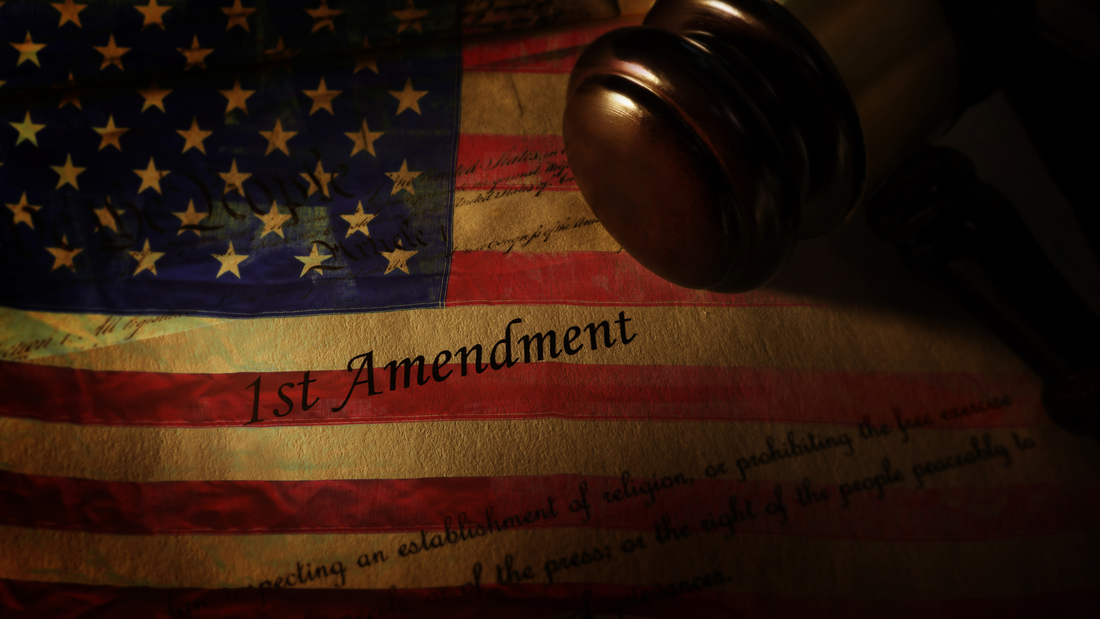|
When the founders drafted the First Amendment forbidding the abridgement of freedom of speech, “pamphlet wars” were common, with opposing sides handing out flyers and inviting passersby to listen to their opinions. Even in this age of tweets, most Americans recognize parks, sidewalks, and other public spaces as venues where people are allowed to hand out flyers and politely ask passersby to hear them out.
The federal courts, however, are split on the question of whether this form of expression, as old as colonial America, must be respected today under the First Amendment. Concerned about this encroachment on speech, Protect The 1st petitioned the U.S. Supreme Court to hear a case from a street preacher who was silenced by university officials and police. This happened when evangelist Rodney Keister stood on city-owned sidewalks on a public street in Tuscaloosa, Alabama, near the University of Alabama. By agreement with the city, the UA campus police oversee a portion of the public sidewalk at an intersection near – but not on – the campus. The campus police more than once warned Keister that he could not preach on this public sidewalk. Fearing arrest, the preacher left but filed a lawsuit that was eventually heard by the Eleventh Circuit Court of Appeals. The question as to whether a city-owned public sidewalk is a traditional public forum should be a slam-dunk in favor of free speech. But federal courts are split on the issue. The Ninth, Tenth, and D.C. Circuits stick with the First Amendment analysis in these public forum cases, allowing speech. But other circuits hold that streets open to the public but adjacent to college and university buildings are limited public forums. Speech there can be restricted. In one public forum case, the D.C. Circuit ruled against the government, which attempted to prohibit a demonstrator from holding a sign or distributing leaflets on the grounds of the U.S. Capitol building. While these grounds are obviously under the control of federal authorities, they are parklike and open to the public. Making this distinction, the D.C. court rejected any claim that the grounds were a “special type of enclave” that had to be protected from free expression. That court held that “because of their historical association with the exercise of free speech,” streets, parks and sidewalks are quintessential examples of public forums. The Eleventh Circuit, on the other hand, held that even though the sidewalk in Tuscaloosa was open to the public and owned by the city, the maintenance of that sidewalk by the university necessarily involves the university’s intent toward expressive activity. Protect The 1st asks the Supreme Court to consider if courts can “apply an amorphous and manipulable balancing test that relies on the government’s or its delegee’s intent to restrict speech as a justification for doing so.” We also informed the Court that by “denying ‘public forum’ status to a place that has traditionally been a public forum – sidewalks tied to public streets – the decision below threatens the First Amendment not merely in Tuscaloosa, but throughout the Nation.” In our petition, Protect The 1st tells the Supreme Court that the “use of multifactor balancing tests makes the outcomes in any given case unpredictable and unprincipled. There is a better way. Relying on the text of the First Amendment, read in light of history and tradition, providers a surer approach.” Protect The 1st believes this case not only raises important constitutional questions on which the courts of appeal are divided, but also presents an excellent vehicle for the Supreme Court to resolve them. Comments are closed.
|
Archives
June 2024
Categories
All
|
ABOUT |
ISSUES |
TAKE ACTION |



 RSS Feed
RSS Feed